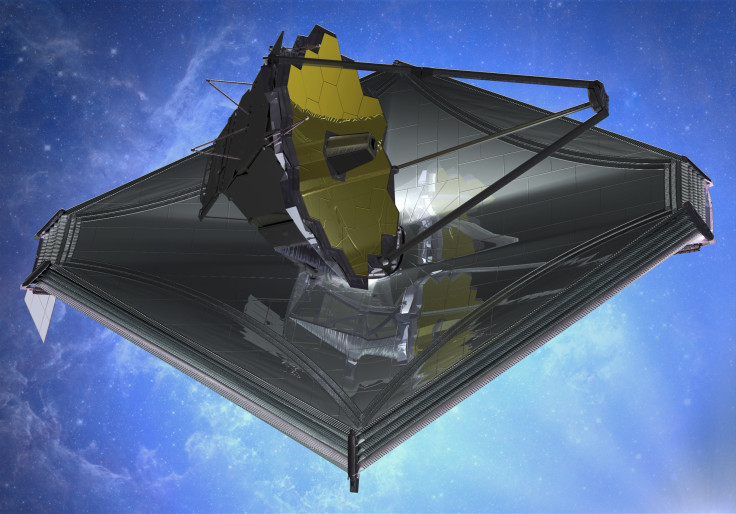NASA’s Largest Space Telescope Completed, Launch Scheduled For 2018

The largest space telescope built by NASA so far is finally complete, 20 years after the project began. The James Webb Space Telescope will now undergo testing and is scheduled to be launched in October 2018.
Compared to its predecessor, the Hubble Space Telescope — which has a 2.4-meter diameter mirror — Webb’s primary mirror has a diameter of 6.5 meters. The telescope can see in both visible light and in infrared. The mirror is comprised of 18 hexagonal segments, made of ultra-lightweight beryllium, which will unfold and adjust after the telescope has launched.
The most significant feature of the Webb telescope is a five-layer sunshield the size of a tennis court that “will prevent the background heat from the sun from interfering with the telescope’s infrared sensors.” Made from kapton, each of the layers has the thickness of a human hair. “The layers work together to reduce the temperatures between the hot and cold sides of the observatory by approximately 570 degrees Fahrenheit.”
James Cooper, Webb telescope sunshield manager at NASA Goddard Space Flight Center in Greenbelt, Maryland, said in a statement: “All five layers are beautifully executed and exceed their requirements. This is another big milestone for the Webb telescope project.”
The sunshield was designed by Northrop Grumman, NASA’s main industrial partner for the space observatory, while the membrane layers were designed and built by NeXolve Corporation, a process that took over three years. After its launch, Webb will be managed by the Space Telescope Science Institute.
Jim Flynn, Webb sunshield manager at Northrop Grumman, said: “The groundbreaking sunshield design will assist in providing the imaging of the formation of stars and galaxies more than 13.5 billion years ago.”
As the most powerful telescope ever built, Webb — a joint project of NASA, the European Space Agency and the Canadian Space Agency — “will observe distant objects in the universe, provide images of the first galaxies formed and see unexplored planets around distant stars.”
Its unprecedented infrared capability will allow astronomers to look at the faintest and the earliest galaxies, as well as behind the cosmic dust to see the birth of the stars and planetary systems. One of the on-board instruments has programmable microshutters that will allow the simultaneous observation of up to 100 objects. There is also a cryocooler to keep down the temperature of another instrument’s mid-infrared detectors.
The telescope, along with its sunshield and its membranes, will fold in origami-style to fit into the Ariane 5 rocket that will launch it from French Guiana.
© Copyright IBTimes 2024. All rights reserved.





















